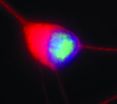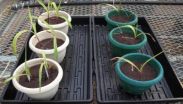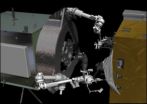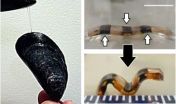Restless legs syndrome may signify bigger health problems
2014-03-05
(Press-News.org) (Boston)--A nationally-recognized sleep expert has published an editorial describing Restless Legs Syndrome (RLS) as a possible biomarker for underlying disease. The editorial appears in the March 5, 2014 issue of Neurology the medical journal of the American Academy of Neurology and was authored by Boston Medical Center neurologist Sanford H. Auerbach, MD.
RLS is a disorder of the nervous system. Patients with RLS have uncomfortable sensations in their legs which lead to an overwhelming urge to move them – most often at night or whenever the patient is resting.
The editorial was in response to an analysis of 12,556 men who were followed over time by the Health Professionals Follow-Up Study, published in the same issue of Neurology, which showed multiple disease associations with RLS.
"Patients with RLS had a higher mortality rate than similar men, and showed an especially strong tendency toward cardiovascular disease and hypertension," said Auerbach, associate professor of neurology and psychiatry at Boston University School of Medicine. In earlier analyses of the same data, men with RLS were more likely to be diagnosed with lung disease, endocrine disease, diseases of nutrition and metabolism and immune system problems.
Auerbach suggests that restless leg syndrome is a meaningful biomarker for serious disease, and that RLS screening may become more common as a tool for primary care providers to identify patients at risk.
INFORMATION: END
ELSE PRESS RELEASES FROM THIS DATE:
Applying math to cancer, climate, crime and cameras
2014-03-05
Improving radiation therapies for cancer mathematically
In a paper published in December in the SIAM Journal on Scientific Computing, authors Li-Tien Cheng, Bin Dong, Chunhua Men, Xun Jia, and Steve Jiang propose a method to optimize radiation therapy treatments in cancer patients.
Radiation therapy is one of the primary methods used for cancer treatment, along with chemotherapy and surgery. While doses of radiation are delivered to eliminate cancerous tissue, care is taken to keep radiation within acceptable levels so as not to affect neighboring tissues and organs. ...
3-D changes in DNA may lead to a genetic form of Lou Gehrig's disease
2014-03-05
New findings reveal how a mutation, a change in the genetic code that causes neurodegeneration, alters the shape of DNA, making cells more vulnerable to stress and more likely to die.
The particular mutation, in the C9orf72 gene, is the most common cause for amyotrophic lateral sclerosis (ALS, also known as Lou Gehrig's disease), and frontotemporal degeneration (FTD), the second most common type of dementia in people under 65.
This research by Jiou Wang, Ph.D., and his colleagues at Johns Hopkins University (JHU) was published in Nature and was partially funded by ...
Look back at US soybeans shows genetic improvement behind increased yields
2014-03-05
URBANA, Ill. – Soybean improvement through plant breeding has been critical over the years for the success of the crop. In a new study that traces the genetic changes in varieties over the last 80 years of soybean breeding, researchers concluded that increases in yield gains and an increased rate of gains over the years are largely due to the continual release of greater-yielding cultivars by breeders.
"This research in some ways looks back and informs us how soybean varieties have changed. It's useful to document these traits and changes," said Brian Diers, a University ...
Fertility prospects following ectopic pregnancy
2014-03-05
WINSTON-SALEM, N.C. – March 5, 2014 – Preserving a fallopian tube following an ectopic pregnancy seems like it would favor a woman's fertility prospects, right?
A new study from Wake Forest Baptist Medical Center looked at pregnancy outcomes in regards to the two surgical treatments for ectopic pregnancy -- salpingectomy, in which the affected fallopian tube is removed, or salpingotomy, in which the tube is preserved.
The aim of the study, said co-author Tamer Yalcinkaya, M.D., a reproductive endocrinologist at Wake Forest Baptist, was to assess whether salpingotomy ...
Maize and bacteria: A 1-2 punch knocks copper out of stamp sand
2014-03-05
Scientists have known for years that together, bacteria and plants can remediate contaminated sites. Ramakrishna Wusirika, of Michigan Technological University, has determined that how you add bacteria to the mix can make a big difference.
He has also shed light on the biochemical pathways that allow plants and bacteria to clean up some of the worst soils on the planet while increasing their fertility.
Wusirika, an associate professor of biological sciences, first collected stamp sands near the village of Gay, in Michigan's Upper Peninsula. For decades, copper mining ...
NASA tests new robotic refueling technologies
2014-03-05
NASA has successfully concluded a remotely controlled test of new technologies that would empower future space robots to transfer hazardous oxidizer – a type of propellant – into the tanks of satellites in space today.
Concurrently on the ground, NASA is incorporating results from this test and the Robotic Refueling Mission on the International Space Station to prepare for an upcoming ground-based test of a full-sized robotic servicer system that will perform tasks on a mock satellite client.
Collectively, these efforts are part of an ongoing and aggressive technology ...
OU study suggests non-uniform climate warming global
2014-03-05
A recent University of Oklahoma study of five decades of satellite data, model simulations and in situ observations suggests the impact of seasonal diurnal or daily warming varies between global regions affecting many ecosystem functions and services, such as food production, carbon sequestration and climate regulation. The effects of non-uniform climate warming on terrestrial ecosystems is a key challenge in carbon cycle research and for those making future predictions.
Jianyang Xia, a research associate in the OU College of Arts and Sciences, says the impact of non-uniform ...
A small step toward discovering habitable earths
2014-03-05
University of Arizona researchers snapped images of a planet outside our solar system with an Earth-based telescope using essentially the same type of imaging sensor found in digital cameras instead of an infrared detector. Although the technology still has a very long way to go, the accomplishment takes astronomers a small step closer to what will be needed to image earth-like planets around other stars
"This is an important next step in the search for exoplanets because imaging in visible light instead of infrared is what we likely have to do if we want to detect planets ...
Researchers find potential target for drug to treat allergic asthma
2014-03-05
COLUMBUS, Ohio – An enzyme that helps maintain immune system function by "throwing away" a specific protein has a vital role in controlling symptoms of allergic asthma, new research in mice suggests.
The finding suggests that this enzyme, called Cbl-b, could be a target for drugs used to treat allergic asthma and other autoimmune disorders.
This new study, led by Ohio State University researchers, is the first to link Cbl-b to allergic asthma in an animal model.
The findings parallel results from a 2012 Yale study in humans, which suggested that a mutation in the ...
Pumping iron: A hydrogel actuator with mussel tone
2014-03-05
Protein from a small, tasty mollusk inspired Michigan Technological University's Bruce P. Lee to invent a new type of hydrogel actuator.
Hydrogels are soft networks of polymers with high water content, like jello. Because of their soft, gentle texture, they have the potential to interact safely with living tissues and have applications in a number of medical areas, including tissue engineering. Lee, an assistant professor of biomedical engineering, wanted to make a hydrogel that wouldn't just sit there.
"Hydrogels that can change shape on command could be used to deliver ...




